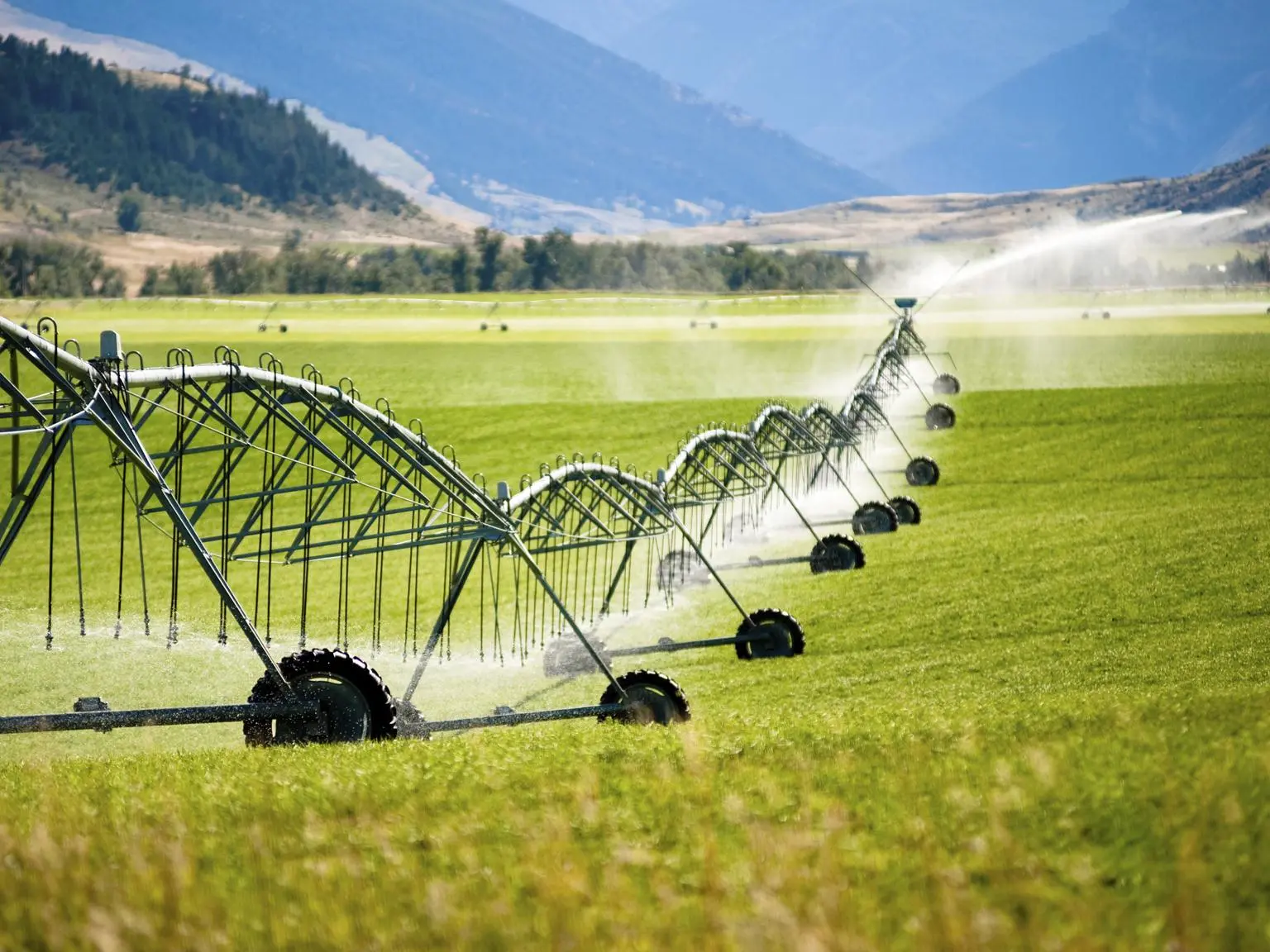As a farmer, you know how vital water is to your livelihood and crop production. Managing this precious resource is becoming increasingly critical as water scarcity rises globally. Nearly 70% of the world’s freshwater withdrawals are used for agriculture, which puts increasing strain on water supplies as the demand for food rises globally. Water conservation techniques in agriculture are constantly changing to satisfy these expectations, and new strategies are being developed to assist farmers in achieving sustainable output.
This article will explore a range of farming practices that help to conserve water, focusing on modern methods that reduce water wastage and enhance the efficient use of water resources.
Overview of Water Usage in Agriculture
Why is Water Conservation in Agriculture Important?
Agriculture is the biggest user of freshwater resources, and climate change is worsening water scarcity in many areas. Sustainable productivity requires careful agriculture and water use management, particularly in regions with scarce water supplies. By implementing water-saving technologies, farmers may save water in agriculture, lower expenses, increase crop yields, and safeguard the environment in their community.
Water Conservation Techniques in Agriculture
Numerous techniques promise to lower water consumption without sacrificing or increasing crop yields. Let’s examine a few of the most promising contemporary methods for conserving water in agriculture.
1. Drip Irrigation Systems
One of the best methods for conserving water in agriculture is drip irrigation. This technique reduces evaporation and runoff by delivering water straight to the plant roots via tubes and emitters. Drip irrigation can use up to 60% less water than conventional flood irrigation.
- Benefits: Prevents soil erosion, decreases weed development, and uses less water.
- Use: Fits well in vineyards, orchards, and row crops.
2- Soil Moisture Monitoring
Farmers can optimize irrigation schedules by employing soil moisture sensors, which provide real-time data on the soil’s water content. This water management system in agriculture allows for precise watering based on actual soil conditions rather than estimates.
- Benefits: Improves crop health and water efficiency by preventing excessive and insufficient watering.
- Use: Commonly found in nurseries, greenhouses, and agricultural grounds.

3- Rotation and Crop Selection
Crop rotation and selecting drought-resistant crops are two practical farming practices that help to conserve water. While rotation gradually enhances soil structure and water retention, some crops naturally demand less water.
- Benefits: It includes increased drought resistance, better soil health, and decreased overall water consumption.
- Application: Adaptable to different crop varieties and climates.
4- Mulching
Mulching covers the earth with organic or inorganic materials to minimize water loss through evaporation. This method saves water, controls temperature, and enhances soil health.
- Benefits: lowering soil erosion, enhancing soil moisture retention, and inhibiting the growth of weeds.
- Use: Frequently found in row crops, orchards, and vegetable gardens.
5- Systems for Harvesting Rainwater
Rainwater harvesting is an effective way of conserving water. Farmers can collect rainwater from fields, greenhouses, and rooftops and store it in tanks or reservoirs for irrigation.
- Benefits: Offers a different water source, lessens the strain on nearby water supplies, and is particularly useful in arid areas.
- Use: Ideal for farms of all sizes; it is beneficial in regions with seasonal rainfall.
6- Precision Agriculture Technologies
Precision agriculture uses GPS, remote sensing, and data analytics to monitor and manage crops precisely. This modern water conservation technique allows for targeted irrigation and fertilizer application, reducing waste and improving yield.
- Benefits include increased output, reduced use of water and fertilizer, and improved resource efficiency.
- Application: Common in large-scale farming operations, but smaller farms are becoming able to use technology.
7- Conservation Tillage
A technique for soil preparation called conservation tillage reduces soil disturbance, lowering water evaporation and increasing soil water retention. Additionally, this method preserves the health of the soil and stops soil erosion.
- Benefits include improving soil structure, lowering erosion, and preserving soil moisture.
- Application: Frequently applied on wheat, corn, and soybeans.
8- Agroforestry and Cover Cropping
Incorporating trees and cover crops into agricultural areas is an efficient water conservation method. By increasing soil moisture retention, decreasing erosion, and improving soil structure, trees and cover crops help lessen the demand for irrigation.
- Benefits include increased biodiversity, better soil health, and moisture retention.
- Application: Fit for farms looking to add multipurpose, sustainable landscapes.
Addressing Water Management Challenges in Agriculture
As we look for ways of conserving water in agriculture, one of the key challenges is ensuring equitable access to water for agricultural usage while meeting the needs of growing populations and changing climates. Solutions to how we can solve water for farming must be holistic, combining sustainable practices with supportive policies and infrastructure improvements.
Governments and agricultural organizations worldwide are working to improve water management systems in agriculture, supporting farmers with subsidies, training, and resources to adopt these sustainable practices.
Reusing Agricultural Wastewater
Reusing agricultural wastewater is an effective water conservation method that can help reduce the demand for freshwater resources. Treated wastewater from agricultural operations contains nutrients that can be reused to irrigate and fertilize crops, resulting in the water cycle in agriculture.
Treatment Methods
Wastewater must be treated appropriately before it can be safely reused. Common treatment methods for agricultural wastewater include:
- Sedimentation – Allowing solids to settle out of the wastewater.
- Filtration – Passing the wastewater through filters to remove particles.
- Biological treatment – Using microorganisms to break down organic matter and nutrients.
- Disinfection – Using chemicals like chlorine or UV light to kill pathogens.
Benefits of Reuse
Reusing treated agricultural wastewater provides several benefits:
- Reduced freshwater usage. Reusing wastewater decreases the volume of freshwater needed for irrigation and other agricultural uses.
- Nutrient recycling. Wastewater contains nitrogen, phosphorus, and other nutrients that can fertilize crops. Reuse helps recycle these nutrients.
- Cost savings. Reusing wastewater can reduce costs for freshwater, fertilizer, and wastewater treatment.
- Improved sustainability. Wastewater reuse supports sustainable agricultural practices by using available water and nutrient resources.
Farmers can work with local wastewater treatment facilities to determine if reusing treated agricultural wastewater is feasible and mutually beneficial. With proper safeguards and oversight, reusing wastewater can be an environmentally friendly practice that helps optimize water usage. The agricultural industry can gain greater water security and resilience by implementing water conservation methods like wastewater reuse.
Investing in Drought-Tolerant Crops
Investing in drought-tolerant crops is an effective water conservation method for farmers. These crops require less water and are more resistant to drought conditions. Some well-known drought-tolerant crops include:
- Barley: Barley is a hardy cereal grain that can tolerate drought and high salinity. It requires only 12 to 18 inches of rain annually to produce a successful crop.
- Sorghum: Sorghum is a versatile crop used for food, feed, and fuel. It uses available soil moisture efficiently and can produce grain with as little as 16 inches of rain.
- Cotton: Cotton is a drought-tolerant crop due to its deep root system, which can tap into soil moisture stored deep within the soil profile. Cotton requires 18 to 28 inches of rain to produce an average crop.
- Beans: Beans, such as pinto beans and black-eyed peas, are legumes that fix nitrogen in the soil and improve soil health. Most bean varieties can produce a successful crop with 10 to 20 inches of annual rainfall.
- Millet: Millet is a small-seeded cereal grass well-suited to hot, dry climates. Most varieties require 12 to 24 inches of rainfall and can tolerate extended periods of drought.
By investing in these arid-adapted crops, farmers can continue producing food and fiber even in hot and dry areas where water resources are scarce. Drought-tolerant crops require less irrigation, which helps farmers save on costs and conserve groundwater. These sustainable practices will be increasingly crucial as freshwater supplies become more limited due to climate change in the years to come.
Conclusion
As you have read, farmers can implement several effective methods to conserve water usage in agriculture. We can save water by optimizing irrigation techniques, planting drought-resistant crops, and practicing sustainable soil management. While transitioning to more sustainable practices requires an initial investment of time, money, and effort, the long-term benefits to the environment and community make these methods worth consideration. By following the recommendations outlined here and making continuous improvements over time, agricultural operations of any size can do their part to ensure clean, abundant water for future generations. Together, we have the power to drive real change.








